Kaiser Richmond Shipyards
| Type | 262 Shipyard | |
| Historical Name of Location | Richmond, California, United States | |
| Coordinates | 37.920887000, -122.364664000 |
Contributor: David Stubblebine
ww2dbaseSince 1936, coordination of merchant shipbuilding in the United States had been the function of the US Maritime Commission. But during the Great Depression of the 1930s, shipbuilding in America was almost non-existent with only 23 ships being launched in the entire decade. By 1940, with the United Kingdom already at war with Germany, there was a sudden increased demand for ships. In response, the Maritime Commission instituted the Emergency Shipbuilding Program that immediately authorized and funded nine emergency shipyards across America. Over the course of World War II, the number of shipyards grew and ultimately reached 53 facilities.
ww2dbaseOn the eastern seaboard of the United States, rival shipbuilders Todd in New York and Bath in Maine joined forces to build and administer the Todd-Bath Iron Shipbuilding Corporation at a new shipyard in Maine. On the west coast, Todd Shipbuilding again brought in their expertise but this time teamed with industrialist Henry J. Kaiser who would provide capital and project management.
ww2dbaseKaiser ran large construction enterprises that had included earlier work on the Hoover Dam, the Bonneville Dam, and the Grand Coulee Dam. Kaiser had partnered with Todd previously and held a minor ownership interest in the Todd shipyards in Seattle and Tacoma, Washington. When the Emergency Shipbuilding Program came along, Kaiser and Todd formed the Todd-California Shipbuilding Corporation to run a new shipyard proposed on the east shore of San Francisco Bay in the tidal flats of Richmond, California.
ww2dbaseOn 20 Dec 1940, the Maritime Commission formally issued contracts to Todd-Bath and to Todd-California to build two new shipyards, one on each coast, and also for 60 cargo ships for the British, 30 on each coast. All 60 ships were to be identical in design and conform to an existing British design for 10,000-ton cargo ships. Together, these ships would be known as the Ocean-class.
ww2dbaseAt the Richmond location, work began almost immediately building seven shipways and the first keel was laid on 14 Apr 1941. Just two days later, the Maritime Commission asked Kaiser to open a second Richmond shipyard to be operating by Sep 1941 building Liberty ships for the American Merchant Marine.
ww2dbaseOn the same docks as the Kaiser yard was Richmond's Ford Motor Company Assembly Plant. Built in 1930, this plant assembled Ford's Model A and was the largest automobile assembly plant on the west coast. Ford was noted for joining steel with strong seams through welding and also for assembling prefabricated components on an assembly line. Traditional shipbuilding practices joined steel plates with rivets, which also created strong seams but were excruciatingly time consuming and labor intensive compared to welding. They also added as much as 300 tons of weight to a medium sized merchant ship. Further, the thinning of the experienced workforce during the runup to war and replacing it with an even larger inexperienced workforce required training previously unskilled workers. Since welding was easier to teach and easier to perform than riveting and there was a need to produce ships quickly, shipbuilding shifted almost entirely to welded seams. Ford's assembly-line process could not be duplicated in shipbuilding but the pre-fabrication concept could. Deckhouses and other fixtures were pre-assembled in their own production areas where these pieces could be built on their sides or upside down, which made the welding easier and therefore stronger. Welding rather than riveting led to some problems too, however. The welding itself was less labor-intensive but the inspections required greater attention. Brittleness in the welded steel plates also led to some degree of cracking in about 55% of all the Liberty ships, including three Liberty ships (not built in Richmond) whose cracks caused the ships to break completely in two.
ww2dbaseEarly on, Todd bought out Kaiser's share in the Washington shipyards and Kaiser bought out Todd's interest in the California shipyards. The management company for the Richmond yards was renamed Permanente Metals Corporation. Shipyard No. 2 saw its first keel laid on 17 Sep 1941 on what would become Liberty-ship SS James Otis. The growth continued with Shipyard No. 2 first expanding to nine shipways and then twelve. The Pearl Harbor Attack accelerated priorities again and on 9 Jan 1942, work began on Shipyard No. 3 to build large troop transports that would operate under the name Kaiser Cargo Company. By Jun 1942, the Maritime Commission called upon Kaiser once more to open even more shipways in Richmond, but this time for Navy auxiliary ships rather than merchant ships. The new ways were initially designated as Yard No. 3A but was quickly renamed Yard No. 4 and operated as the Kaiser Company. These shipways built LST-class landing ships for the US Navy and later produced coastal freighters and Tacoma-class Patrol Frigate gunboats, based on the Canadian corvette. By the time the complex of four shipyards was up to full speed, a total of 27 shipways bustled with activity.
ww2dbaseBesides the Richmond and Terminal Island facilities, Henry Kaiser also opened two new shipyards in Portland, Oregon and another in Vancouver, Washington plus an ownership interest in the Sunnyvale, California iron works that built the triple expansion steam engines that powered the Ocean-class and Liberty ships.
ww2dbaseWith larger facilities came a larger workforce that swelled to over 100,000 paid workers. In two years, Richmond's population swelled from 23,000 to 130,000. In addition to the Kaiser yards in Richmond, the San Francisco Bay Area had eight other sizeable shipbuilding operations plus others up the Sacramento River Delta as far inland as Stockton and Sacramento. Not only that, there were 55 other war-production industries in Richmond alone, producing everything from hand grenades to K-Rations. Production at the Ford plant continued after converting from Model A's to Jeeps and tanks. With all this wartime production in the area, Kaiser and his shipyards were in stiff competition for both materials and workers. Presidential Executive Order 8802 prohibiting discrimination in defense industries brought thousands of workers from all across the country, including many African-American workers from the southern states and many women. However, twenty-seven unions representing nearly 80,000 workers in the four Kaiser shipyards stubbornly resisted incorporating women and African-Americans into the workforce, particularly the Black workers. Even so, Kaiser employed many Black workers and by Apr 1943, apart from office and administrative workers, 40% of the laborers on the Kaiser shipways and pre-fabrication facilities were women; many were Black women.
ww2dbaseAs an employer of several thousand workers, Henry Kaiser took an interest in their support that was uncommon at the time. Housing areas popped up quickly and, with many women in the workforce, Kaiser provided company-supported child care centers, schools, and other services as part of the new neighborhoods. There was even a dedicated electric commuter train system developed between the housing areas and the shipyards. In Kaiser's earlier Grand Coulee Dam project, he offered his workers a novel company-paid health care system. When that project closed, however, the health services also stopped. Kaiser replicated that model at the Richmond shipyards with improvements that included a full range of healthcare, not just work-related care. A large staff of doctors was hired, clinics were opened, and an emergency hospital was built. With matching contributions from the workers' paychecks, pre-paid health care was also available to the employees' families. The program was wildly successful and as the workforce started shrinking later in the war, Kaiser transitioned the health care component into a separate, private entity. He named the new company Kaiser-Permanente and it has been operating successfully as an employer-provided healthcare system ever since.
ww2dbaseThe high number of women across the country entering the wartime workforce led to a 1943 novelty song called, "Rosie the Riveter" about a woman working in an aircraft factory. The popularity of the song led to different images of the character appearing in the American popular press and Rosie became a folk-hero, of sorts, symbolizing factory women furthering the war effort by doing the work heretofore done by men. At the Kaiser Richmond Yards, where riveting was conspicuously avoided in favor of welding, an alternate image of "Wendy the Welder" was put forward but never gained traction. Given that Rosie the Riveter was an aircraft riveter and the Kaiser shipyards did not use riveting at all, it is mildly ironic that today's National Park Service Rosie the Riveter WWII Home Front Museum is at the location of the former Kaiser Richmond Shipyards in one of the buildings of the old Ford plant.
ww2dbaseThe purpose of the Emergency Shipbuilding Program was to build a lot of ships quickly, so the number of ships and speed with which they went into service was closely monitored. Kaiser's four Richmond shipyards produced a total of 747 ships during World War II, including 18% of all Liberty-ships built. The Richmond shipyards held two significant speed records; among all the shipyards in the Liberty-ship building program, Richmond had the lowest average number of construction days per ship (42) and also held the record for the fastest single ship completed, 4 days, 15 hours, and 29 minutes from keel laying to launch (SS Robert E. Peary).
ww2dbaseAs the war wound down, so did the pace at the shipyards across America. When the war ended, the yards began closing. The last ship built at the Kaiser Richmond Shipyards, the SS Marine Snapper, was completed in Apr 1946.
ww2dbaseSources:
Kaiser-Permanente
National Park Service - Rosie the Riveter WWII Home Front Museum
Shipbuilding History
Franklin Roosevelt Library
Cuahutémoc Arroyo (thesis); Ferris State University
Failure Knowledge Database
University of California
Oregon Historical Society
SanPedro.com
Wikipedia
Last Major Update: May 2022
Ships Constructed at Kaiser Richmond Shipyards
| Ship Name | Yard No | Slip/Drydock No | Ordered | Laid Down | Launched | Commissioned |
| Stephen Hopkins | 2 Jan 1942 | 14 Apr 1942 | ||||
| George Washington Carver | 7 | 12 Apr 1943 | 7 May 1943 | |||
| Antoine Saugrain | 12 | 26 Jul 1943 | 15 Aug 1943 | |||
| Hobbs Victory | 10 Nov 1944 | 9 Jan 1945 |
Kaiser Richmond Shipyards Interactive Map
Photographs
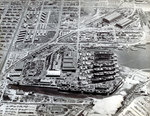 | 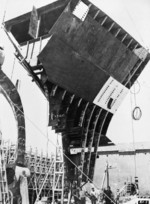 | 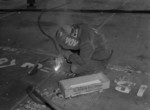 | 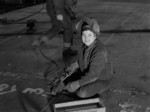 |
Maps
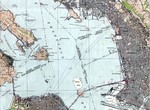 | 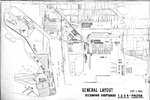 |
Kaiser Richmond Shipyards Timeline
| 20 Dec 1940 | The Maritime Commission formally issued contracts to Henry Kaiser and Joseph Todd to build a new shipyard on the east shore of San Francisco Bay in the tidal flats of Richmond, California. The contract also called for Kaiser and Todd to build 30 merchant ships according to a British design. |
| 14 Apr 1941 | The first keel was laid at the new Kaiser Richmond Shipyard in Richmond, California, United States. The ship would later serve with the British Merchant Navy as the SS Ocean Vanguard and was sunk by torpedo off Trinidad in 1942. |
| 17 Sep 1941 | The first keel was laid at the new Kaiser Richmond Shipyard No. 2 in Richmond, California, United States. The ship would later serve with the British Merchant Navy as the SS James Otis and was wrecked off Devon, England, United Kingdom in Feb 1945. |
| 2 Jan 1942 | The keel of Stephen Hopkins was laid down by the Kaiser Richmond Shipyards in Yard No. 2, Way #3 in Richmond, California, United States. |
| 14 Apr 1942 | Stephen Hopkins was launched at the Kaiser Richmond Shipyards at Yard No. 2 in Richmond, California, United States. |
| 15 May 1942 | The first of the 489 Liberty Ships built at the Kaiser Richmond Shipyards was laid down in Shipyard No. 1. The ship was delivered 97 days later as the SS Edward Rowland Sill and served until 1967. |
| 5 Aug 1942 | US Navy LST-476 was laid at the Kaiser Richmond Shipyards in Richmond, California, United States. This was the first ship to be laid down at Richmond's new Shipyard No. 4. |
| 11 Nov 1942 | The first ship was launched at the new Kaiser Richmond Shipyard No. 3 in Richmond, California, United States. The ship would later served with the US Navy as USS George O. Squier, lead ship of her class of troop transports. |
| 12 Apr 1943 | The keel of George Washington Carver was laid down at Yard No. 1 of Kaiser Richmond Shipyards, Richmond, California, United States. |
| 7 May 1943 | George Washington Carver was launched at Yard No. 1 of Kaiser Richmond Shipyards, Richmond, California, United States, sponsored by actress and civil rights activist Lena Horne. |
| 26 Jul 1943 | The keel of Antoine Saugrain was laid down at Yard No. 2, Kaiser Richmond Shipyards, Richmond, California, United States. |
| 15 Aug 1943 | SS Antoine Saugrain was launched at Yard No. 2, Kaiser Richmond Shipyards, Richmond, California, United States. |
| 11 Apr 1944 | Haskell-class Attack Transport USS Sarasota was laid down at Kaiser Richmond Shipyard No. 2. This was the first of 22 Haskell-class ship built at the Richmond yards. |
| 7 Jun 1944 | The first of the newer, larger, and faster Victory-class ships was laid down at the Kaiser Richmond Shipyard No. 1. The ship would become SS Legion Victory and would serve until 1970. |
| 14 Jul 1944 | The last of 489 Liberty-ships built at the Kaiser Richmond Shipyards, the Benjamin Warner, was delivered to the Navy after 18 days on the ways and 13 days on the water being fitted out. |
| 10 Nov 1944 | The keel of Hobbs Victory was laid down at Yard No. 2, Kaiser Richmond Shipyards, Richmond, California, United States. |
| 9 Jan 1945 | SS Hobbs Victory was launched at Yard No. 2, Kaiser Richmond Shipyards, Richmond, California, United States. |
| 1 Apr 1946 | [date appx] The last ship built at the Kaiser Richmond Shipyards was completed as the C-4-class bulk merchant ship SS Marine Snapper. The ship was scrapped in 1972. |
Please consider supporting us on Patreon. Even $1 per month will go a long way! Thank you. Please help us spread the word: Stay updated with WW2DB: |
Visitor Submitted Comments
17 Dec 2024 11:46:27 AM
My Grandfather worked in the Richmond Shipyards on "Liberty Ships" as I was told by my father, who has passed away. I'm trying to find out when my grandfather worked in the shipyards, what his trade was, & what ships he may have worked on. His Name was Kermit S. Blodgett. Any information would be greatly appreciated as I'm trying to complete my family tree & my grandparent's history.
All visitor submitted comments are opinions of those making the submissions and do not reflect views of WW2DB.

Richmond, California, United States
Latitude-Longitude:
37.9209, -122.3647
- » 1,181 biographies
- » 337 events
- » 45,132 timeline entries
- » 1,249 ships
- » 350 aircraft models
- » 207 vehicle models
- » 376 weapon models
- » 123 historical documents
- » 261 facilities
- » 470 book reviews
- » 28,427 photos
- » 365 maps
Winston Churchill
Please consider supporting us on Patreon. Even $1 a month will go a long way. Thank you!
Or, please support us by purchasing some WW2DB merchandise at TeeSpring, Thank you!
11 Apr 2024 07:20:22 PM
His last name is Waite I have his badge and # 57335 join the army in the mid 1940s and never came home doing a family tree would really like to know his first name everyone else in my family has passed away